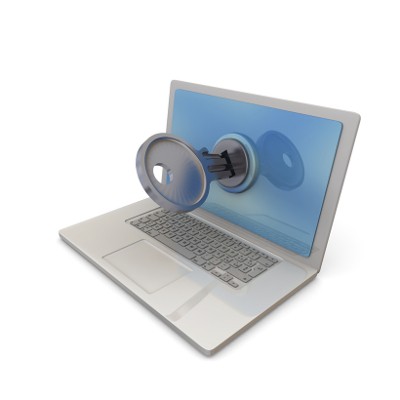Businesses need to take security into account and make it a priority. In fact, security is so important that Verizon has compiled a report of the various types of attacks and data breaches that occurred in the past year. This is Verizon’s Data Breach Investigations Report, or DBIR, and it offers insights into how you can protect your business and secure your assets.
ZR Systems Blog
If you’re like every other small business out there, you know that the more employees you hire, the more technology that you have to procure. However, when you have more end-users, you provide more avenues for threats to slip into your network infrastructure unnoticed. When all it takes is one simple mistake from a single end-user, how can you minimize the chances of falling victim to an untimely hacking attack?
We’ve put together ten honest mistakes that any end-user can make, and how they can be prevented.
- Clicking on malicious links: With so much information on the Internet, it’s easy for an employee to search through countless pages without any regard to the sites and links that they’re clicking on. You need to emphasize the importance of safe browsing, including double-checking the destination of a link before clicking on it. You can do so by hovering over the link and looking in the bottom-left corner of your browser.
- Using weak passwords: Employees frequently use passwords that aren’t strong enough to keep hackers out. Often times, they’ll simply use something of personal significance, like the name of their pet or a specific date. This isn’t the right way to approach password security. Instead, users should attempt to put together passwords that are private, randomized strings of numbers, letters, and symbols.
- Ignoring mobile security: Even if your company has the latest and greatest security solutions installed on its desktops, you should also be thinking of your mobile devices, like smartphones and tablets. It’s arguably more important that your mobile devices have solid security solutions implemented on them, as they are often on the road, connecting to potentially dangerous hotspots. You need to make sure that security is a top priority in your Bring Your Own Device (BYOD) policy.
- Accessing sensitive data through unsecured connections: If your employees are using the local café’s free wireless Internet to get some work done on their lunch break, it could be a dangerous gambit. Public Wi-Fi hotspots are notorious for being cesspools of online threats. Implementing a virtual private network (VPN) can be a handy investment that can encrypt data while it’s in transit, mitigating this risk somewhat.
- Losing unencrypted devices: It’s not unheard of for an employee to use company devices in public places. If they accidentally leave their smartphone on the bus, or their tablet on a park bench, there’s always the risk that it can be stolen. Unless you practice proper encryption protocol, any information available on the device can be accessed by the person who finds it, be it a good samaritan or a tech-savvy thief.
- Implementing unapproved solutions: Some employees simply prefer to use solutions that aren’t provided by the company to get their work done. The problem here is that the employee is moving forward without consulting IT about it, and that your data is being used in a solution that you can’t control. Plus, if the employee is using free or open-source software, these often come bundled with unwanted malware that can put your data in even greater peril.
- Targeted business email scams: Phishing and spear-phishing attacks are growing more common. One example of this is an HR employee checking their inbox to find what looks like a job application or employment inquiry. All of the right information is there and nothing appears out of the ordinary; that is, until a malicious link contained within it starts to download malware or other nasty threats to your infrastructure. Other types of phishing attacks will ask end-users to confirm personally identifiable information or sensitive account credentials. Educating your team on how best to identify phony email messages is imperative to keeping your network secure.
- Personal email use: It’s one thing to check your personal email account while at work, but another entirely to use your personal email account to perform work purposes. As the recent debacle with Hillary Clinton shows, people don’t take kindly to sensitive information being leaked via an unsecured email server that their organization has no control over. Add in the fact that personal email accounts are often not as secure as those in a professional productivity suite, and you have a recipe for disaster. You need to reinforce that your team should keep their work and personal email separate.
- Leaving workstations unattended: Besides the fact that some tech-savvy employees are practical jokers, it’s a security risk to leave a workstation unlocked and unattended for long periods of time. Imagine if someone from outside of your organization walked into your office and accessed confidential files without authorization; that’s on the employee who got up and left the device unattended. Encourage your employees to always log off of their workstations, or at least lock them, before stepping away from their computer.
- Using external storage devices: Your organization should only be using IT-provided USB devices and external storage. Otherwise, anyone with a random flash drive can connect it to your network, unleashing a horde of who-knows-what into your infrastructure.
User error is a primary cause for concern among businesses, but it can be mostly avoided by providing your staff with the training required to do their jobs properly. For more information about IT best practices, give us a call at (808) 369-1000.
We often talk about how important it is that your business use the most recent and up-to-date versions of your software solutions, but it’s not often that we get to say that people using Internet Explorer 11 have the right idea. As it turns out, nearly a quarter of all Windows PCs are still using unsupported versions of Internet Explorer, with half of them being found on computers still running Windows XP. What has this world come to?
When it comes to cybersecurity, maintenance is key. Whether you choose human-based security or an automated security solution, running into shortcomings is still possible. Human security tends to rely on the word of experts, and anything that doesn’t fit into the guidelines is missed and may therefore get through and wreak havoc. Network security can be a touch overzealous, in a way “crying wolf,” with an excess of false positives that ultimately require human analysis, leading to human frustration.
 You’re walking your dog when all of a sudden, you get this game-changing idea for how to manage your technology. You get excited to integrate it into your IT strategy, but by the time you get home, the thought is gone and you can’t remember it. This “Eureka” moment is just like data loss; it could occur at any time, and without warning, whether you’re ready for it or not.
You’re walking your dog when all of a sudden, you get this game-changing idea for how to manage your technology. You get excited to integrate it into your IT strategy, but by the time you get home, the thought is gone and you can’t remember it. This “Eureka” moment is just like data loss; it could occur at any time, and without warning, whether you’re ready for it or not.
 Humans are always trying to improve security protocols that can protect against increasingly advanced online threats. Unfortunately, the threats only grow stronger in response, and the war against malicious online activity rages on. Biometrics are security measures that are growing in popularity, but are expensive and difficult to integrate. Now, the US military is funding a campaign to make it more readily available to end users.
Humans are always trying to improve security protocols that can protect against increasingly advanced online threats. Unfortunately, the threats only grow stronger in response, and the war against malicious online activity rages on. Biometrics are security measures that are growing in popularity, but are expensive and difficult to integrate. Now, the US military is funding a campaign to make it more readily available to end users.
 One of the most important factors that you should consider when looking for IT staff is how much you can trust them. After all, they’re dealing with your technology. You’re trusting them with incredible responsibility. Therefore, you need to be sure they are honest, hard-working individuals. How can you ensure that you aren’t getting blindsided by your IT staff?
One of the most important factors that you should consider when looking for IT staff is how much you can trust them. After all, they’re dealing with your technology. You’re trusting them with incredible responsibility. Therefore, you need to be sure they are honest, hard-working individuals. How can you ensure that you aren’t getting blindsided by your IT staff?
 You might be aware that some websites collect personal data from you depending on your mobile device’s location, your browsing history, and several other factors. This information is generally used for marketing, but it could have unforeseen effects on the way you browse the Internet. It can be fairly revealing about your personality, or possibly even incriminating. Therefore, you should be aware of how this personal information is gathered from you without you even knowing it.
You might be aware that some websites collect personal data from you depending on your mobile device’s location, your browsing history, and several other factors. This information is generally used for marketing, but it could have unforeseen effects on the way you browse the Internet. It can be fairly revealing about your personality, or possibly even incriminating. Therefore, you should be aware of how this personal information is gathered from you without you even knowing it.
 The nature of hacking is to take advantage of weak points and exploit them for some kind of profit. This is usually seen in flaws or vulnerabilities found within the code of a program or operating system, but these flaws can be psychological, too. Hackers are increasingly taking advantage of a concept known as “social engineering” to fool users into handing over sensitive information that can be used against them.
The nature of hacking is to take advantage of weak points and exploit them for some kind of profit. This is usually seen in flaws or vulnerabilities found within the code of a program or operating system, but these flaws can be psychological, too. Hackers are increasingly taking advantage of a concept known as “social engineering” to fool users into handing over sensitive information that can be used against them.
 As a business professional, you have a responsibility to ensure that your company’s network and data is protected from hacking attacks. It can be difficult to remember to take all of the necessary precautions, but with our help, you can easily outline all of the measures that should be taken to maximize security for corporate data.
As a business professional, you have a responsibility to ensure that your company’s network and data is protected from hacking attacks. It can be difficult to remember to take all of the necessary precautions, but with our help, you can easily outline all of the measures that should be taken to maximize security for corporate data.
 Can you believe it’s already been two years since Cryptolocker, a particularly nasty strain of ransomware, was released into the online environment? By encrypting files on a victim’s computer, and forcing them to pay a fee for their safe return, Cryptolocker has been a significant threat to both business and personal environments. Now, however, a particular strain of Cryptolocker is making gamers look like cybersecurity rookies.
Can you believe it’s already been two years since Cryptolocker, a particularly nasty strain of ransomware, was released into the online environment? By encrypting files on a victim’s computer, and forcing them to pay a fee for their safe return, Cryptolocker has been a significant threat to both business and personal environments. Now, however, a particular strain of Cryptolocker is making gamers look like cybersecurity rookies.
 With social media playing such an important role in everyone’s day-to-day lives, one has to wonder to what degree this affects the security of online accounts and profiles. Social media might have revolutionized the way we communicate with others, but it’s also revolutionized the way that hackers stalk their victims. How vulnerable are you and the people you love when it comes to your Facebook settings?
With social media playing such an important role in everyone’s day-to-day lives, one has to wonder to what degree this affects the security of online accounts and profiles. Social media might have revolutionized the way we communicate with others, but it’s also revolutionized the way that hackers stalk their victims. How vulnerable are you and the people you love when it comes to your Facebook settings?
 Attention people of the Internet, October is Cyber Security Month! Make sure that you share this information with everyone on the Internet that you know. In a situation like this, sharing content with everyone to raise awareness of a worthy cause is perfectly fine. Although, what’s not alright is the sharing of your personal information online.
Attention people of the Internet, October is Cyber Security Month! Make sure that you share this information with everyone on the Internet that you know. In a situation like this, sharing content with everyone to raise awareness of a worthy cause is perfectly fine. Although, what’s not alright is the sharing of your personal information online.
 With new threats emerging all of the time, it’s no wonder that cybersecurity is such a major part of any technological endeavor. Your should be using the most powerful security solutions on the market in order to avoid intensive hacks. Despite the emphasis that our society places on security, it takes a high-notoriety hack to truly shake the public into action; for example, what if the Central Intelligence Agency were hacked by a teenager?
With new threats emerging all of the time, it’s no wonder that cybersecurity is such a major part of any technological endeavor. Your should be using the most powerful security solutions on the market in order to avoid intensive hacks. Despite the emphasis that our society places on security, it takes a high-notoriety hack to truly shake the public into action; for example, what if the Central Intelligence Agency were hacked by a teenager?
 Requesting a ransom from victims is an unfortunate trend gaining momentum in the hacking world. This is typically done using ransomware (where hackers encrypt data and request money for the key) and distributed denial of service attacks (where hackers threaten to overwhelm a system with traffic, thus knocking it offline). In both scenarios, hackers are looking for the victim to pay up, or else. Should they?
Requesting a ransom from victims is an unfortunate trend gaining momentum in the hacking world. This is typically done using ransomware (where hackers encrypt data and request money for the key) and distributed denial of service attacks (where hackers threaten to overwhelm a system with traffic, thus knocking it offline). In both scenarios, hackers are looking for the victim to pay up, or else. Should they?
 Password security is quite the conundrum. We want our passwords to be easy to remember, but the problem is that passwords that are easy to remember are often simple and insecure. Therefore, it becomes a best practice to use complicated passwords with both upper and lower-case letters, numbers, and symbols to compensate. The “passpoem” might resolve this issue in the most obvious way.
Password security is quite the conundrum. We want our passwords to be easy to remember, but the problem is that passwords that are easy to remember are often simple and insecure. Therefore, it becomes a best practice to use complicated passwords with both upper and lower-case letters, numbers, and symbols to compensate. The “passpoem” might resolve this issue in the most obvious way.
 Cloud computing started out as a trend, but it’s become a staple in the modern business environment. A recent poll of IT and business executives by Harvard Business Review and Verizon shows that 84 percent of respondents have increased their use of cloud services in the past year, 39 percent of which “increased significantly.” The issue that comes from such an increase is the idea of employees accessing information that they aren’t supposed to.
Cloud computing started out as a trend, but it’s become a staple in the modern business environment. A recent poll of IT and business executives by Harvard Business Review and Verizon shows that 84 percent of respondents have increased their use of cloud services in the past year, 39 percent of which “increased significantly.” The issue that comes from such an increase is the idea of employees accessing information that they aren’t supposed to.
Mobile? Grab this Article


























